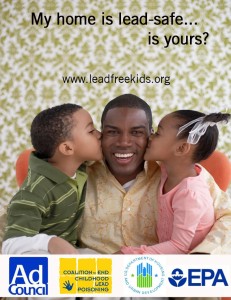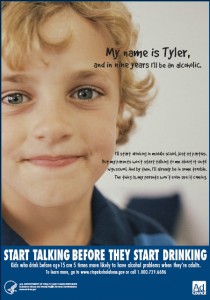26
Mental Monday: Animal-Assisted Therapy in War Zones
I recently learned that a psychology team in Afghanistan brought a few therapy service dogs with them to help the troops. There is reason to believe that these dogs will be very helpful for the troops as they help keep spirits high and ease the mental and physical stresses associated with combat.
Since World War II, animals have been commonly used in both mental and physical therapeutic settings as a way to help the healing process. From cats and dogs to horses, animals have been proven to be a wonderful way to help people recover from both mental and physical ailments. Anyone who has a companion animal or a service dog already knows that there is nothing like holding, hugging, and petting a warm, soft, and cuddly animal to help ease the mind and soothe the soul.
Animals can help lower blood pressure and reduce stress and anxiety levels. They can also help combat depression and social isolation, two issues that are often comorbid with other mental or psychical health problems. Specially trained service animals have helped people in private therapeutic settings, schools, hospitals, convalescent homes, and even prisons. (continues…)
08
Lead-Free Kids: Give-Away Winner!
 The winner for the give-away items sponsored by Lead-Free Kids is comment #5! Congrats, Victoria! I will be contacting you shortly via e-mail.
The winner for the give-away items sponsored by Lead-Free Kids is comment #5! Congrats, Victoria! I will be contacting you shortly via e-mail.
Have you checked out that shiny new badge on my home-page for Lead-Free Kids? If you feel as strongly as I do about the prevention of lead-poisoning, a serious health problem that affects one million children nationwide today, please feel free to download the badge to your website as well.
Congrats again to the winner of the give-away and a BIG thank you to Lead-Free Kids for all you do to help prevent lead poisoning.

23
Let’s Talk About Lead: What Every Parent Needs To Know
 I was recently contacted on behalf of the Ad Council, the Coalition to End Childhood Lead Poisoning, the Environmental Protection Agency and Housing And Urban Development (HUD) in the hope to help spread more awareness about lead-based poisoning. These four agencies have joined forces to create a new website devoted to the dangers of lead. It’s called Lead Free Kids and I urge every parent and caretaker to check it out to learn more.
I was recently contacted on behalf of the Ad Council, the Coalition to End Childhood Lead Poisoning, the Environmental Protection Agency and Housing And Urban Development (HUD) in the hope to help spread more awareness about lead-based poisoning. These four agencies have joined forces to create a new website devoted to the dangers of lead. It’s called Lead Free Kids and I urge every parent and caretaker to check it out to learn more.
Lead is a very toxic metal that affects more than one million children today. It can be especially harmful for children under the age of six. It’s important for every parent and caretaker to know the dangers associated with lead, where to look for it, and the symptoms of lead poisoning.
Where lead can be found:
- If you live in a house or apartment that was built before 1978, there is a very good chance that it was originally painted with lead-based paint. This is important to know because even though there may be several layers of new paint over the original paint, paint chips and dust from deteriorating paint may contain lead.
- Lead can be found in the soil around your home and in your drinking water.
- You can also find lead in older playground equipment, artificial turf made from rubber, and older or antique toys.
- Although there is a U.S. ban on the use of lead in the manufacturing of children’s products that does not mean that all toys and other children’s products are guaranteed safe. There have been recent recalls associated with lead in certain toys, jewelery, and other products for children. Keep an eye out for all recalls, including children’s products at www.recalls.gov.
Symptoms of lead-poisoning in children: (continues…)
05
Help Save Kaili – Bone Marrow Donor Drive in SoCal on 4/6/10
Be a hero and help save the life of a 4 year old girl.
If you live in the Orange County/Los Angeles area, please consider attending the bone marrow donor drive tomorrow (April 6, 2010) in Garden Grove, CA for 4 year old Kaili Nguyen.
Kaili is battling MDS Leukemia and a bone marrow transplant is her last-chance option for survival. No one in her family is a match. All that is required to check for a match is a few minutes of your time and a cheek swab.
This event is sponsored by the National Marrow Donor Program and will be held at the G.G. Unified School District Office from 1:00 pm to 4:00 pm:
Garden Grove Unified School District 10331 Stanford Drive Garden Grove, CA 92840 MapHope to see you there.

Edited to add:
For those that cannot make it to this bone marrow drive, please note that you can join the donor registry at any time using a mail order kit. Check out the National Marrow Donor Program website for more information.
02
Start Talking Before They Start Drinking
 Did you know that the month of April has been designated Alcohol Awareness Month? I didn’t either until I was contacted on behalf of the new Underage Drinking website, which was developed by the U.S. Department of Health and Human Services. This new public education website was created in support of the Surgeon General’s call to action to bring more awareness to parents about the negative effects of drinking alcohol at an early age. Alcohol abuse is a critical issue because it remains the biggest substance abuse problem among our youth.
Did you know that the month of April has been designated Alcohol Awareness Month? I didn’t either until I was contacted on behalf of the new Underage Drinking website, which was developed by the U.S. Department of Health and Human Services. This new public education website was created in support of the Surgeon General’s call to action to bring more awareness to parents about the negative effects of drinking alcohol at an early age. Alcohol abuse is a critical issue because it remains the biggest substance abuse problem among our youth.
Some startling facts about underage drinking:
- Children who first use alcohol before the age of 15 are six times more likely to have alcohol problems than those who start drinking after the age of 21.
- 40% of children have tried alcohol before 8th grade.
- 75% of high school seniors have tried alcohol.
- According to the National Institute on Alcohol Abuse and Alcoholism, approximately 5,000 people under the age of 21 die as a result of drinking alcohol.
- 11% of 8th graders, 22% of 10th graders, and 29% of 12th graders have engaged in heavy episodic (binge) drinking.
- Children are starting to drink much earlier than ever before. The average age of first use in 2003 was 14. In 1965, the average age was 17.5.
The new website suggests short and frequent discussions rather than have “the talk” which can be long and intimidating for children. Many children will simply tune parents out, especially if they are being talked *at* and not *to.* When you start a dialogue with your child, make sure to ask them questions and make time for their questions, too. Another important factor is to establish your rules and thoughts on alcohol use early and consistently. (continues…)


